In the fast-paced world of retail and consumer goods logistics and warehousing, efficiency is vital. Businesses need to optimize their operations to meet ever-growing customer demands while keeping costs in check.
Whether you’re managing a fulfillment warehouse, coordinating distribution services, or overseeing inventory management, implementing best practices is key to achieving maximum efficiency.
Let’s explore seven tried-and-tested strategies to optimize your logistics and warehousing operations effectively.
Key Takeaways:
- Embrace technology: Invest in warehouse management systems (WMS) and automation solutions to enhance accuracy, efficiency, and productivity.
- Optimize layout and space: Analyze warehouse layout, implement slotting optimization, and utilize vertical space to minimize travel time and congestion.
- Implement lean principles: Adopt 5S methodology and JIT inventory management to create a clean, organized, and efficient work environment.
- Enhance collaboration and communication: Foster seamless communication channels and leverage collaborative technologies for real-time information sharing.
- Prioritize training and development: Invest in comprehensive training programs and continuous learning opportunities to maintain a skilled and motivated workforce.
- Implement performance metrics and Key Performance Indicators (KPIs): Define relevant KPIs, utilize data analytics tools, and monitor performance for continuous improvement.
- Adapt to changing market dynamics: Stay agile, embrace innovation, and evaluate and refine strategies to remain competitive and deliver exceptional value.

Embrace Warehouse and Logistics Technology
If your customers are in retail or consumer goods or even supply to these supply chain ecosystems, you’ll need to keep up! Gone are the days of manual inventory tracking and paper-based processes. Today, technology reigns supreme in logistics and warehousing. You can invest in state of the art warehouse management systems (WMS) that offer real-time visibility into inventory levels, order status, and warehouse activities.
Take advantage of automation solutions for tasks like order processing, picking, and packing to minimize errors and speed up throughput. By harnessing the power of technology, you can improve accuracy, efficiency, and overall productivity in your operations.
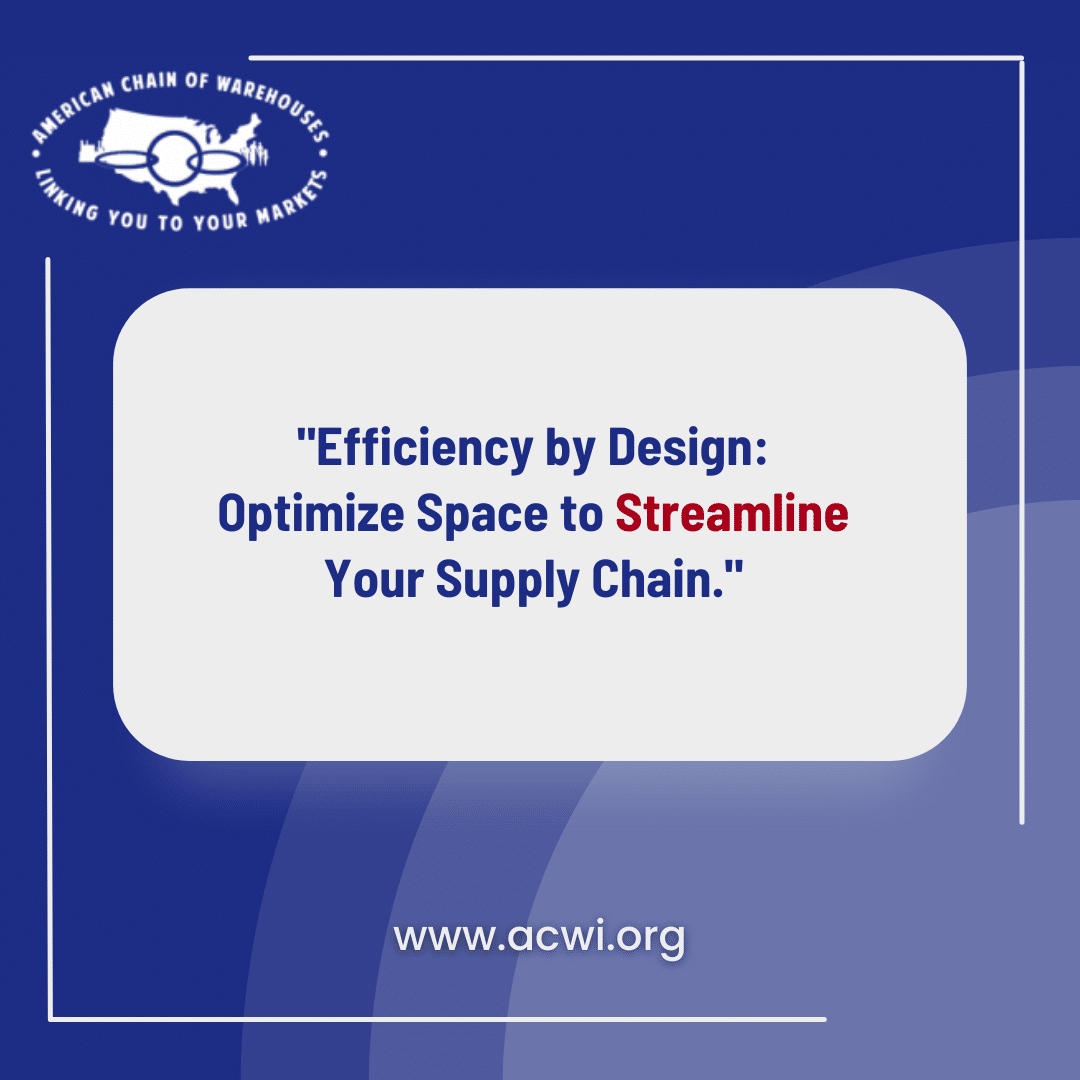
Optimize Layout and Space Utilization
Efficient warehouse layout and space utilization are crucial for maximum efficiency.
Conduct a comprehensive analysis of your warehouse layout to identify areas for optimization. Implement strategies such as slotting optimization to ensure fast-moving items are easily accessible while storing less frequently picked items in less prime locations.
Utilize vertical space with mezzanine levels or racking systems to maximize storage capacity without expanding your footprint. By optimizing layout and space utilization, you can minimize travel time, reduce congestion, and improve overall workflow efficiency.
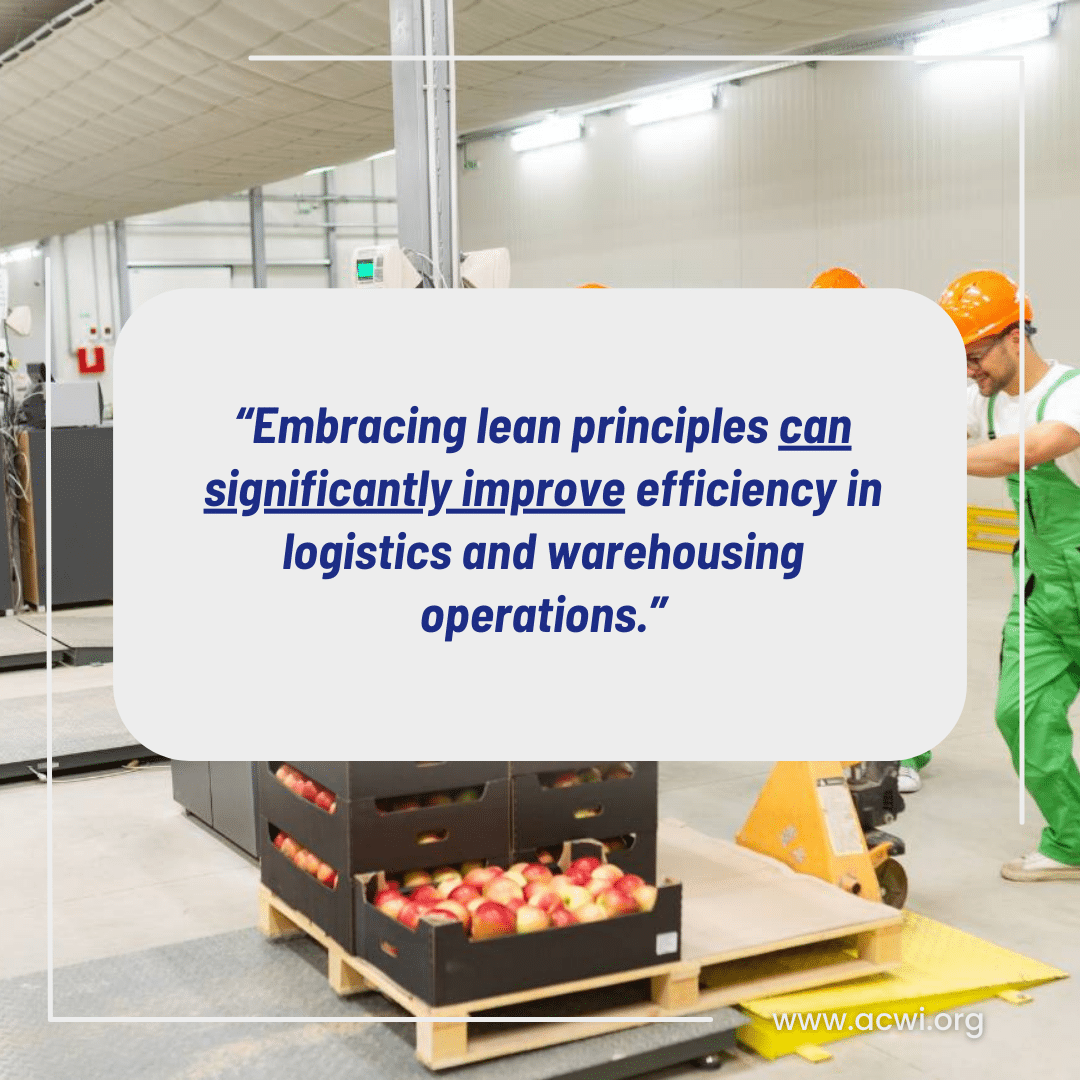
Implement Warehousing and Logistics Lean Principles
Embracing lean principles can significantly improve the efficiency of your logistics and warehousing operations. Adopt methodologies such as 5S (Sort, Set in order, Shine, Standardize, Sustain) to create a clean, organized, and standardized work environment.
Implement Just-in-Time (JIT) inventory management to reduce excess inventory and storage costs. Continuously recognize and eliminate waste through unnecessary motion, overproduction, or excess inventory.
Fostering a culture of continuous improvement and lean thinking can drive efficiency gains and optimize resource utilization.
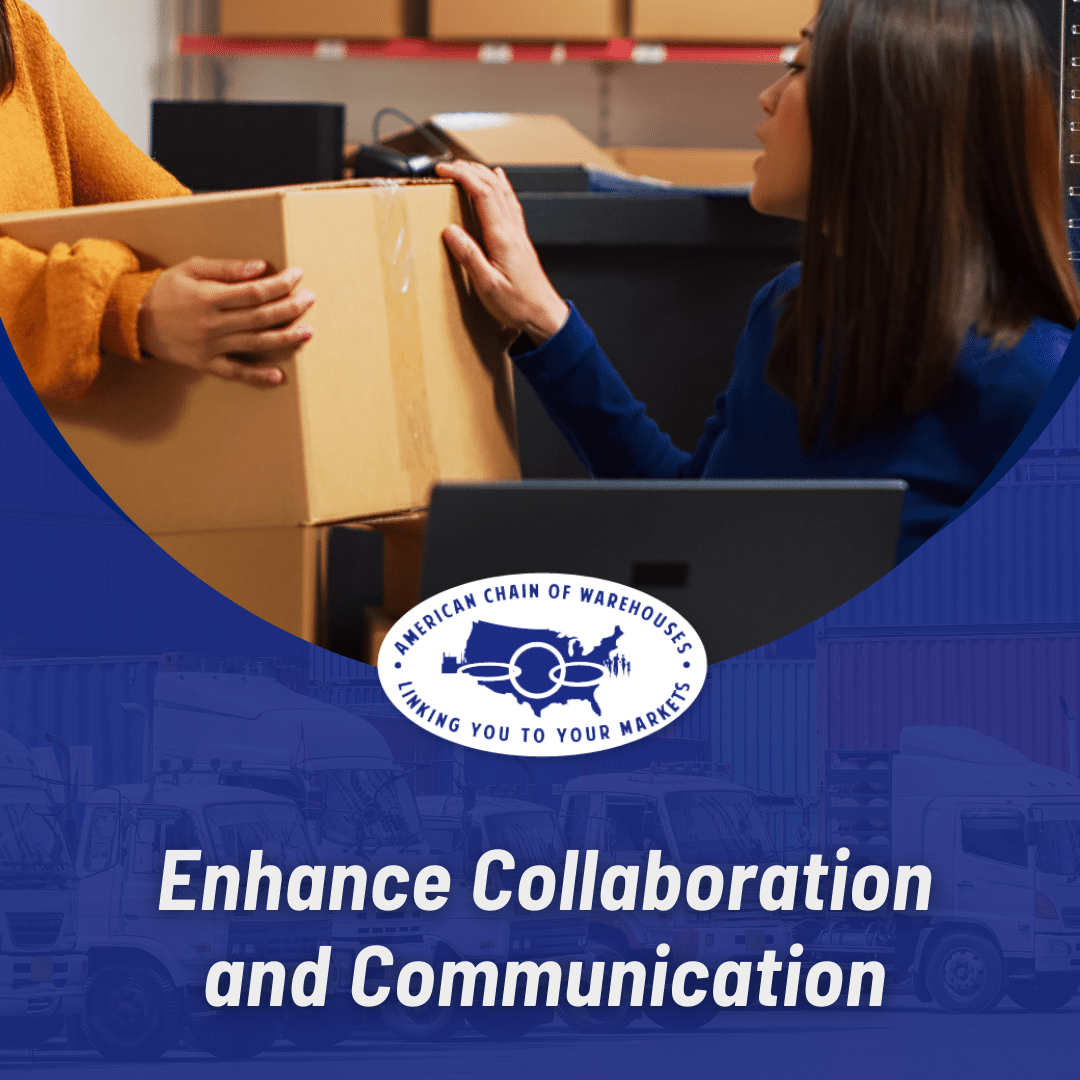
Enhance Warehouse and Logistics Collaboration and Communication
Effective collaboration and communication are the foundation of efficient warehouse logistics and operations. Foster seamless communication between warehouse staff, transportation providers, suppliers, and other stakeholders involved in the supply chain.
Leverage collaborative technologies like cloud-based platforms or collaborative software to enable real-time communication and information sharing.
Encourage cross-functional teamwork and transparency to ensure everyone is aligned toward common goals and objectives. By enhancing collaboration and communication, you can streamline processes, resolve issues promptly, and optimize overall supply chain performance.
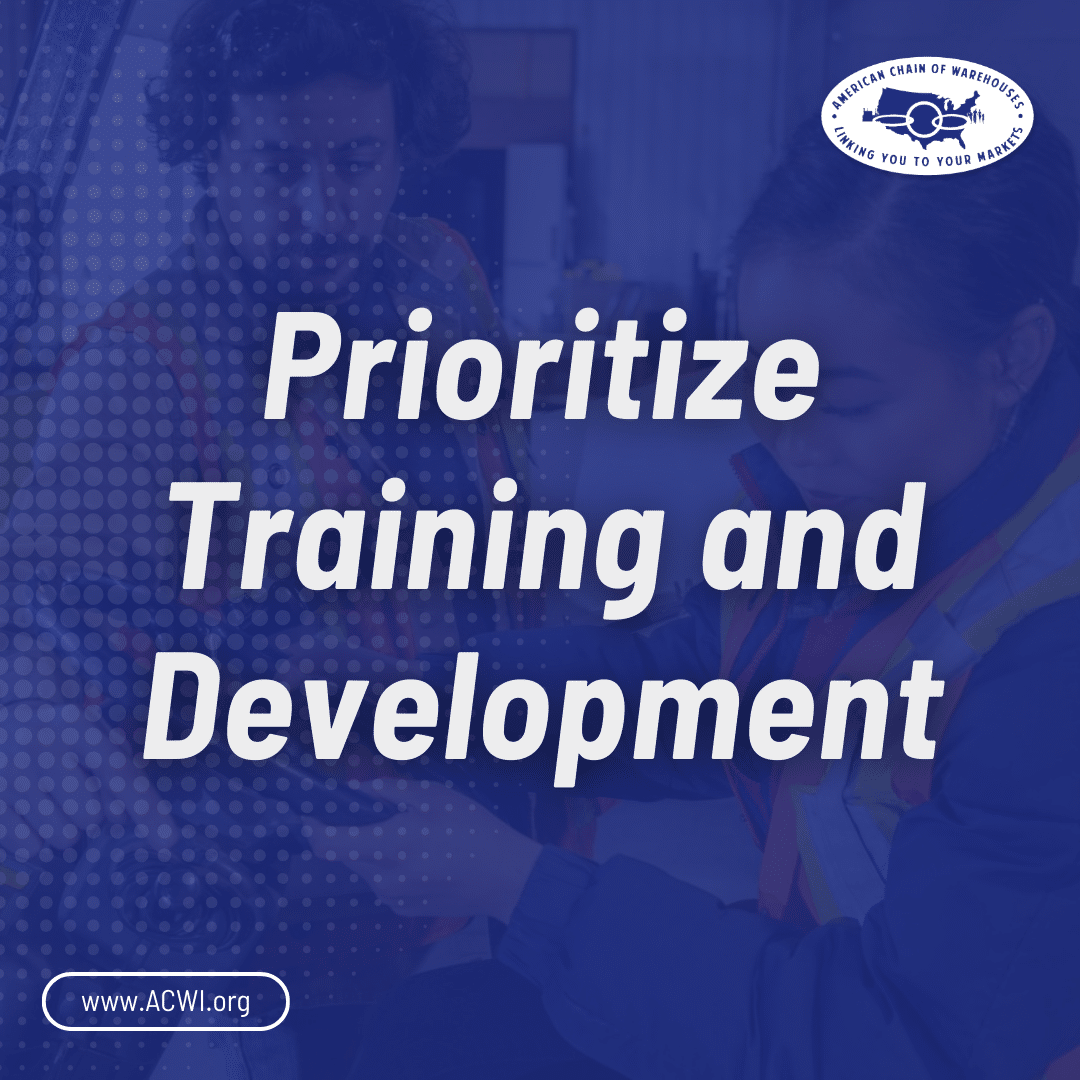
Prioritize Training and Development
Investment in employee training and development is essential for maintaining a skilled and motivated workforce in logistics and warehousing. Offer extensive training programs for warehouse staff covering safety procedures, equipment operation, and process workflows.
Introduce continuous learning and skill development opportunities to keep up with evolving technologies and industry trends. Empower employees with the knowledge and skills they need to be both efficient and effective in their roles.
By prioritizing training and development, you can enhance productivity, reduce errors, and cultivate a culture of excellence within your organization.
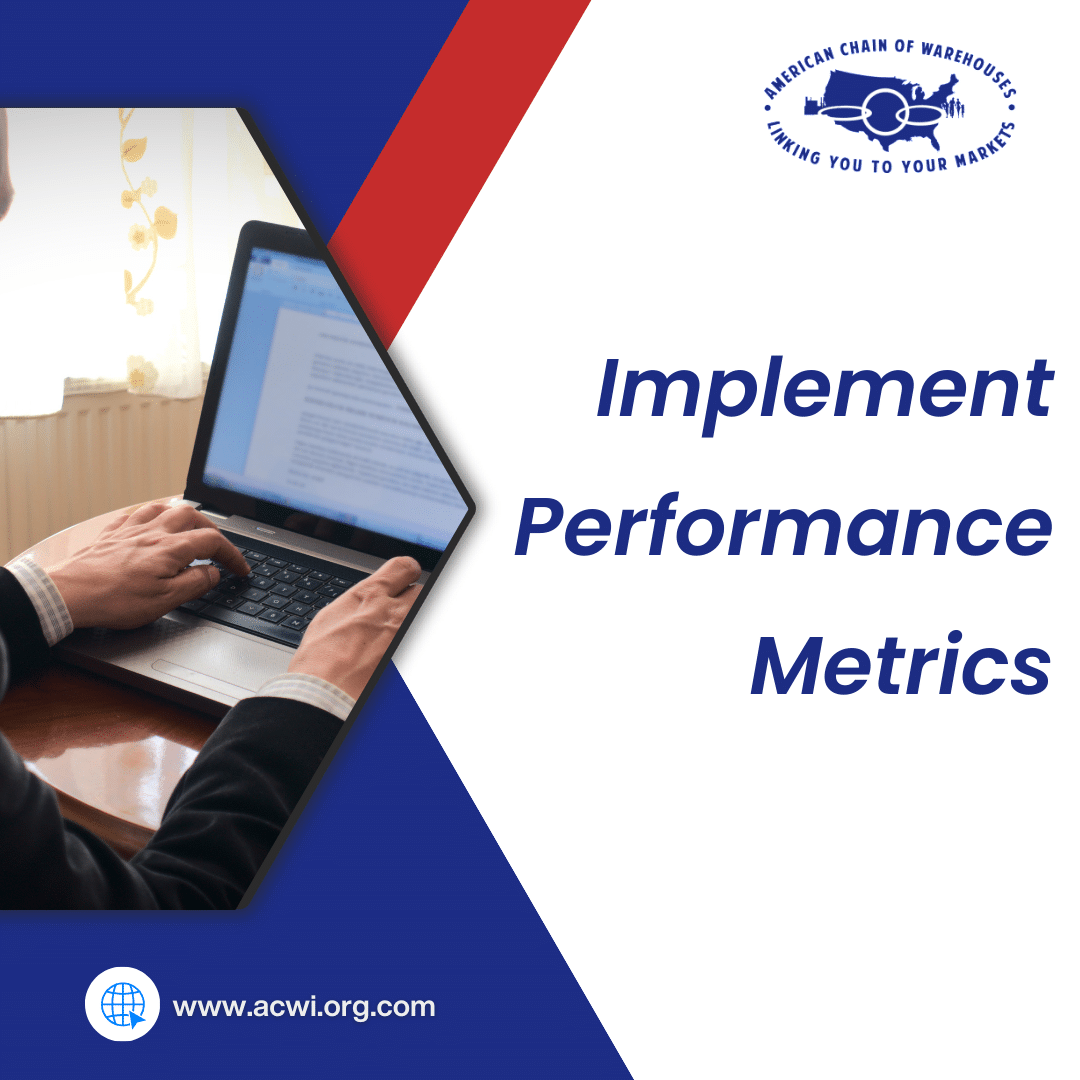
Implement Performance Metrics and KPIs
Measuring performance metrics and key performance indicators (KPIs) are critical for tracking progress and identifying opportunities for improvement in logistics and warehousing operations.
Define relevant KPIs like order fulfillment cycle time, order accuracy, inventory turnover, and on-time delivery performance. With data analytics tools, pinpoint actionable insights, identify trends, and interpret patterns that influence efficiency.
Regularly monitor and analyze performance metrics to assess performance against targets and drive continuous improvement initiatives.
Implementing performance metrics and KPIs can drive accountability, identify inefficiencies, and optimize processes for maximum efficiency.
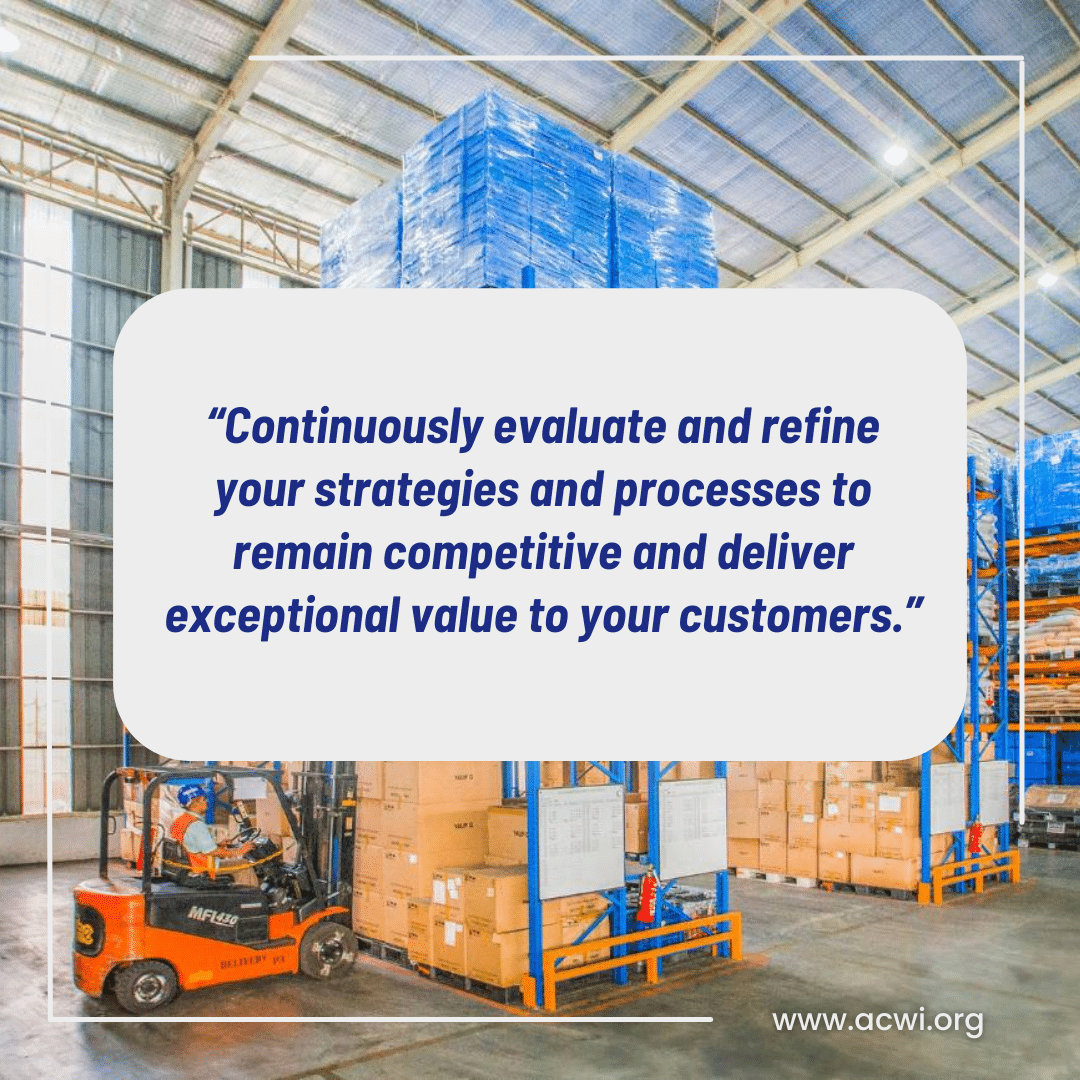
Adapt Your Warehouse to Changing Market Dynamics
The logistics and warehousing landscape is constantly evolving, driven by changes in consumer behavior, technology advancements, and market dynamics. Stay agile and adaptable to respond effectively to changing market conditions and customer demands.
To stay ahead of the curve, embrace innovation, and explore emerging technologies like robotics, artificial intelligence, and predictive analytics.
Continuously evaluate and refine your strategies and processes to remain competitive and deliver exceptional value to your customers.
By adapting to changing market dynamics, you can future-proof your logistics and warehousing operations, safeguard your competitive edge, and thrive in today’s competitive marketplace.
Elevate your logistics and warehousing operations with these proven strategies and watch your business thrive in a competitive marketplace.

About ACWI: Founded in 1911, ACWI is a non-profit organization that matches your company to the right warehousing and logistics service provider. They offer a network of third-party logistics providers (3PL)s which operate more than 12 million sq ft of warehouse space. Efficient management of customer inventories, with personalized attention to the needs of individual companies across a wide array of industry sectors has made ACWI a premier provider in 3PL and warehousing. Stay updated on the latest warehousing news by subscribing to ACWI’s newsletter “ACWI ADVANCE“. Connect with ACWI on Facebook and Linkedin for regular news and updates.



